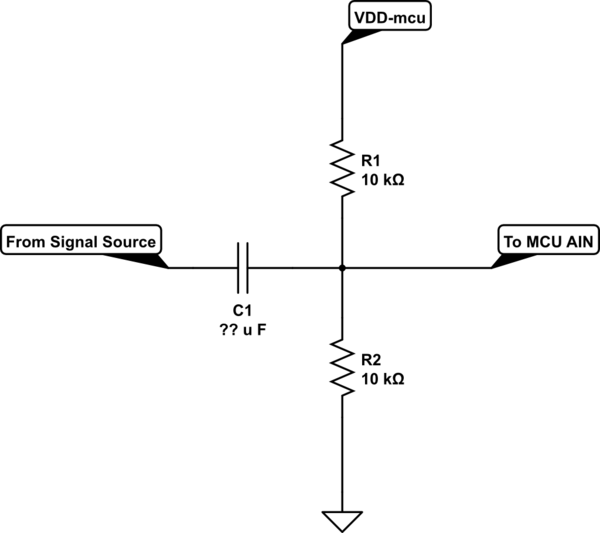I'm working on an application which requires me to read a curve on an analogue signal. Depending on external influence the curve could either be a negative voltage or positive voltage. The shape of the curve doesn't change so it's effectively a direct inversion. The ADC of the STM32F4 that I am using has a Vref- that must be tied to Vss ie. ground (vref+ is currently 3V3 but I'm planning to reduce that when I get around to it). The ADC is currently configured to 12bits @ 1Msps. I'm taking 30 samples for each time i get a signal at the indicated point.
My problem: I can read Potential Signal 2 fine, it is within my ADC reference voltage. I cannot read Potential Signal 1 as it is outside my ADC reference voltage.
Solutions: I was initially just going to add a DC offset of 0.7V or so with a 5V rail that I have but ripple which may be present on the supply (LM78L05) could affect my reading as I am currently converting with an approximate accuracy of 800uV per bit.
I've also considered configuring the ADC to use two channels. One channel would be connected to the signal via a low gain inverter (this would flip potential signal 1 and amplify it a little) and channel 2 would be connected to the signal via a low gain non-inverting amplifier. I'm thinking that I could do this with a 2 Op Amp package and with precision resistors for the feedback loop.

simulate this circuit – Schematic created using CircuitLab
I could then use software to determine which of the two possible signals is the correct one (eg. potential signal 1 would mostly read a zero in ADC channel 2 but would look correctly inverted on ADC channel 1).
Does this make any sense, is there a simpler way to do this? My biggest issue is that my accuracy needs to be quite high, in the region of 100s of microvolts. Would voltage ripple present on the supply for the op Amp affect the output?
Idea number 2 inspired by @Rohat Kılıç's answer:

As I was initially concerned about adding an offset because of the potential added noise/ripple from the power rail, could I stick with the idea of using 2 channels of the ADC, add the same offset to both with the signal only being present on channel 1 and then channel1 - channel2 to remove the common noise?
thanks for the help


